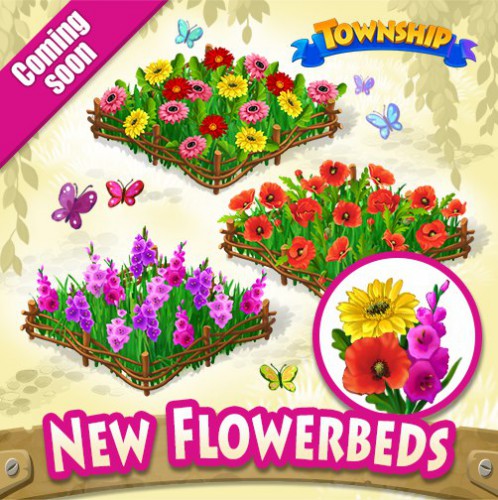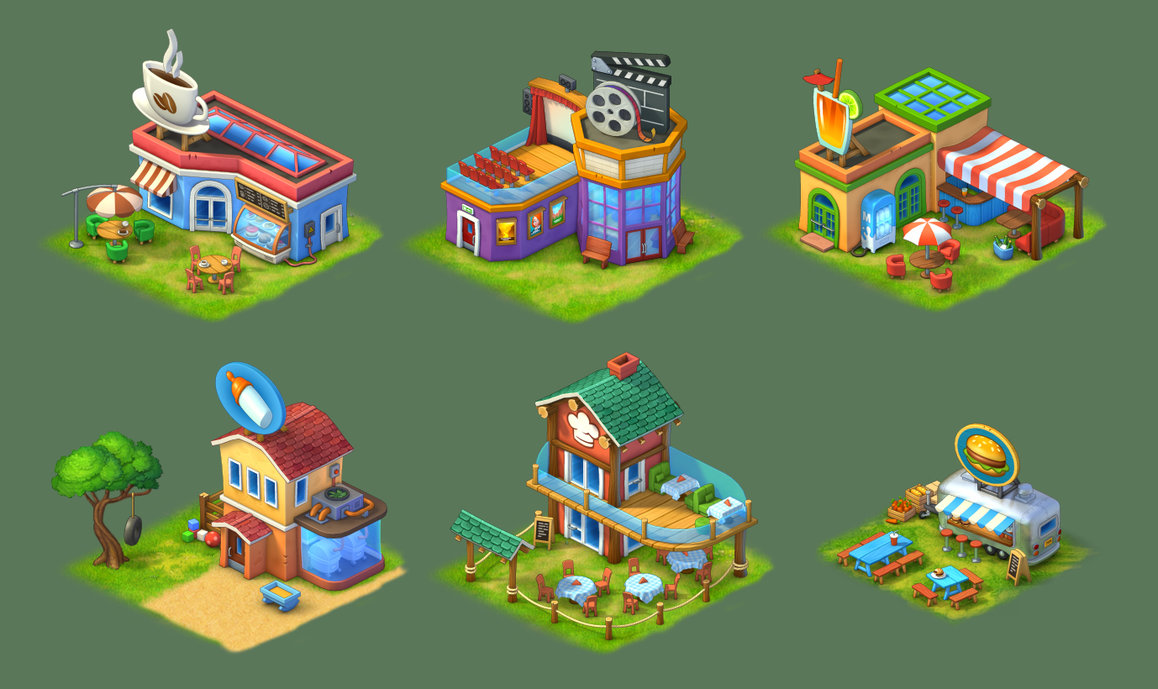Igor Elovikov, Creative Director at Playrix, told us how was the Township created and shared some thoughts about the history of farm games.

Image Credit: Township
I’d like to start with a question on theory: what’s the difference between farms and builders?
I don’t differentiate between these genres. This is the question of settings. Our Township, for instance, for the most part, is a farm. But we position it as a mix of city builder and a farm.
If so, what changes in the genre would you point out in the recent years?
There are some changes. Many people are trying to do something. Some integrate elements of adventures: a global map of island travelling, for instance. Developers are trying to leave the skeleton the same but distance from Hay Day.
I want to say that there is base mechanics – growing and processing, and people always come up with something around it. Here we still have some huge potential that we can use to develop something new.
And these long chains – “grow a carrot, add some bread and get a pie” – originated long ago?
Look, Hay Day looks like the browser-based German Farmerama. Farmerama is a very old game. It’s around 10 years old.
Supercell has rather thoughtfully taken a successful browser project and adapted it. Farmerama and Hay Day are very similar up to the entourage. They have a board of orders and a little lorry. And it already featured these chains of orders.
Finns don’t even deny that they got their inspiration from there.
Because of Hay Day today, everybody is trying to integrate the chains. We may say it’s a trend but the chains originated long time ago.
Hay Day simply could build good gameplay around them. For instance, drag-and-drop here is not some abstract manipulation with a huge list but a concrete action by the player with his involvement in the process. It sounds like a simplification but it’s a plus.
Let’s talk about Township. When you first started to think about the project you kept in mind Farmerama or Hay Day?
It was a very complex evolutionary process. Originally, we had Township on Facebook that we made long time ago. There we were mostly inspired by casual time managers. They also had production chains but very simple ones.
Like FarmVille?
No.
You grow tomatoes and each factory, in essence, just processes one product into another. So, for instance, you can make sauce out of tomatoes or milk out of clover. There are no recipes as such, there is just turning one type of goods into another, more expensive.
On Facebook everything worked fine, Township demonstrated good results.
Later we started making its mobile version. In essence, we ported it one-to-one.
Close to the day of release Hay Day was launched and we understood that our game would not survive the competition. As a result, we completely reworked the game referring to the principles of Hay Day.
Essentially, we had everything ready prior to the rework: factories where you could grow all the content, but we decided to go the Hay Day way and complicate things.
And how much time did all this rework take?
It was winter of 2012-2013. We were supposed to launch the game that winter but due to reworks we relaunched in June 2013 as a soft-launch. In November-October we celebrated a full-scale release.
So, we took five months to completely “shake up” all the mechanics, then another three-four months for soft-launch, and then the release. In total, we are talking about eight months.
Let’s get back to the game. You have complicated the gameplay based on Hay Day, added chains (rye, flour, pie)… All these lengthy chains, I always thought that it’s more of a male theme. But we know that you have a significant female audience. How does Township handle that?
Township is primarily a “female” game. About 70% of the audience are women.
Obviously, the statement that such production chains may scare them off is wrong.
If we are talking about the players. Have you even come across the situation when the players draw tables in Excel and calculate the game?
Of course, we have such players. I know that Hay Day has a wiki and our game also has one. It’s a certain category of players that is trying to hack the system: what product is more profitable, how can you make maximum cash over a minute of gameplay. But this is more a male thing. Women play differently.
And have you researched what players pay more? Those who sit in Wiki and study where to spend their carrots or those that came and really dig your graphics? Who pays the most, who do you target?
It’s an interesting question. I would guess that the most active players are those who like the game and not those who like to study it deeply. So, it’s not the ones that sit in Wiki. But it is merely a supposition and we did not study it.
You have released an update on November 5, and there was a line that users asked for a batch with cornflags. But this does not affect the gameplay, i.e. you cannot harvest those cornflags. If you make a pie chart to compare the expenses related to useful stuff like timers and such things, there is a share of unnecessary items like decorations. How significant is it?
We don’t sell decorations. We are not trying to monetize them for real money: in our case, it just does not work. The cornflags are not sold for cash. Nobody buys them. They are sold for special currency. This is how people are ready to buy them – for in-game savings, and they like it. And the real money people are spending mainly for materials, acceleration for skipping some steps in production. But you can also attribute it to materials. Materials and acceleration, nothing else. Unnecessary decorations, unnecessary items gain zero.
But I came across an opinion that decorations require a lot of spendings.
Some of our decorations are very expensive. We position them as goals. So, such and such decoration costs 10 golden billions. In order to get them, you need to work hard; you really need to spend a month in the game. We tried selling them for hard currency and we had some cool unique decorations but they did not gain anything. That’s why we decided that it would be better to sell them not for cash. This way people would buy them much easier.

Perhaps it depends on the genre. There are games with avatars. You buy some garment and often see other players in it. So you can monetize unique outfit. In our case decorations are not something you always demonstrate to other players, although you have a possibility to visit friends. It’s something for yourself. Looks like people are not really ready to buy for real money some digital decoration that will be seen by only a few players besides themselves.
How often do you need to issue updates to keep players interested? And what should be part-and-parcel of such updates?
We try to make monthly updates. And, of course, we cannot fit new mechanics with each new update. But the most profitable updates are updates with something really new. Our latest update – with a zoo for Township – was the most financially successful. People are interested in adding new functionality and its expansion. This is really important. We try to create the right mix of something new and mere cosmetic updates. We even split Township team accordingly. There are people who do the “polishing” – because it’s endless. We improve some buttons all the time, review the current interface, effects, and sounds. With each update, we improve something.
But the buttons are not really noticeable.
Yes, but we don’t assess it from this standpoint.
The outlook of Township has significantly changed from its launch. I don’t know about the way to assess its effect but the game results are better and better, that’s why we came to the conclusion that it also makes the difference.
For instance, we had a feeling that we made the graphics somewhat dim, that’s why we always redraw everything, making it brighter and neater.
Where is the project successful today?
Let’s say in Russia the project is as successful as in Europe. But overall it is by far more successful in the West. And, what’s interesting, it is very successful in China.
Can you tell us more about China?
We don’t know exactly why the game is so popular in China. We do not have a publisher there but it did not prevent us from moving to the top. Slowly but surely and high. Township right now is the fourth non-Chinese game in top grossing after Hearthstone, Clash of Clans and Boom Beach. So far, China for us is the second largest market in terms of returns for us after the USA.
You simply published Township in all Chinese stores?
Just on iOS. We are working on Android release this year together with our partner but it’s too early to talk about the details.
We are trying to develop our expansion into Asia further, because if the game is popular in China, why would not it be popular in Korea?

Whereas, we already launched in it in Korea once and got very good results. But later the game dropped in ratings which is untypical for Township. We had some technical problems and I have a feeling that we just could not fix them properly. Besides, we worked there through a partner, and when you don’t have direct control over all the game components, it’s hard to fix any kind of problems.
Now you are thinking of going there yourself?
Yes, but this time, maybe, without integration with Kakao as we did last time. Generally, they say that no integration – no success. But I don’t know. We are trying. In China we just released and that’s it. We did not have any integration with WeChat or something else. There the game was just localized into Chinese. That’s it, generally. No special adaptation there. No cultural localization.
It looks expensive visually.
Yes, visually it is expensive and the style does not meet any cultural peculiarities. So, it can be liked by virtually anyone.
